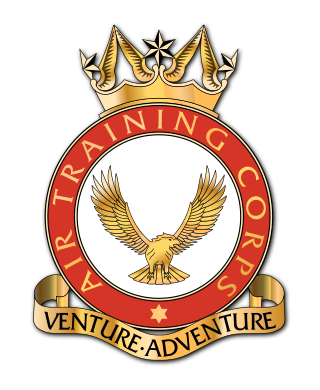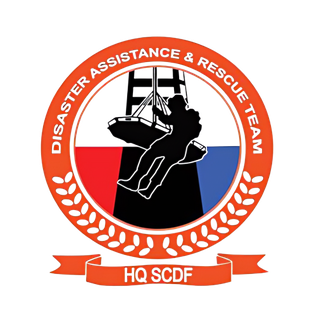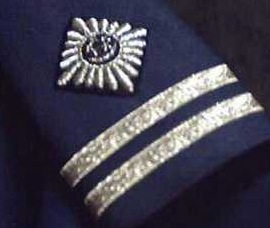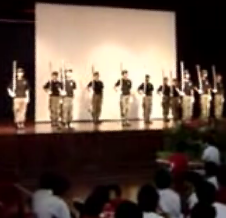Corporal is a military rank in use by the armed forces of many countries. It is also a police rank in some police services. The rank is usually the lowest ranking non-commissioned officer. In some militaries, the rank of corporal nominally corresponds to commanding a section or squad of soldiers.
Staff sergeant is a rank of non-commissioned officer used in the armed forces of many countries. It is also a police rank in some police services.
Lance corporal is a military rank, used by many English-speaking armed forces worldwide, and also by some police forces and other uniformed organisations. It is below the rank of corporal.

The Air Training Corps (ATC) is a British volunteer youth organisation of the United Kingdom; aligned to, and fostering the knowledge and learning of military values, primarily focussing on military aviation. Part of the Royal Air Force Air Cadets (RAFAC), the ATC is sponsored by the Royal Air Force (RAF) and the wider Ministry of Defence (MoD). The majority of Air Training Corps staff are volunteers, though some staff are paid for full-time work; including Commandant Air Cadets, who is a Royal Air Force officer as part of a Full Term Reserve Service commitment.

The Sea Cadet Corps is a national youth charity. It is present in England, Scotland, Wales, Northern Ireland, Malta and Bermuda. Cadets follow an ethos, training plan and rank structure similar to that of the Royal Navy, and are recognised by the UK Ministry of Defence.

The New Zealand Air Training Corps is one of the three corps in the New Zealand Cadet Forces (NZCF), alongside the New Zealand Sea Cadet Corps and the New Zealand Cadet Corps. It is funded in partnership between the Royal New Zealand Air Force (RNZAF) and local communities. Members are civilians with no obligation to enlist in the New Zealand Defence Force (NZDF). Should a cadet enlist, their service in the ATC cadet does not translate into higher pay, rank, or seniority.

The National Police Cadet Corps is one of the national uniformed group for youths between age 13 to 17 in Singapore. The organisation is supported by the Ministry of Education and the Ministry of Home Affairs. Established in 1959, it trains young boys and girls in the values of law enforcement and public safety.

The New Zealand Cadet Corps is one of the three corps in the New Zealand Cadet Forces, the other two being the Air Training Corps, and Sea Cadet Corps. There is no reference to the Army within the official title of the NZCC, but an army theme is used for the NZCC. All of its members, from the cadets themselves to the officers and the support committees are civilian volunteers. Members have no obligation to head into the New Zealand Defence Force (NZDF); however, some do choose to join the NZDF.

The Singapore Civil Defence Force (SCDF) is a uniformed organisation in Singapore under the Ministry of Home Affairs that provides emergency services such as firefighting, technical rescue, and emergency medical services, and coordinates national civil defence programme.

The Disaster Assistance and Rescue Team (DART) is the elite unit of the Singapore Civil Defence Force (SCDF) that specialises in complex incidents such as technical rescue, urban search and rescue, water rescue operations and prolonged firefighting.

Singapore maintains an active conscription system in accordance with the regulations set by the Government of Singapore, known as National Service (NS). This requires all qualified male Singaporean citizens and second-generation permanent residents to serve a period of active duty military service in the uniformed services.
The Home Team Academy (HTA) is the training institute for various organisations of the Ministry of Home Affairs in Singapore, including the Singapore Police Force, the Singapore Civil Defence Force, the Central Narcotics Bureau, the Singapore Prison Service, the Immigration and Checkpoints Authority, and the Internal Security Department, amongst other agencies.
The Civil Defence Auxiliary Unit (CDAU) is part of the Singapore Civil Defence Force (SCDF) consisting of uniformed volunteers.
The Singapore Armed Forces (SAF) has five rank schemes for active and reservist personnel, with a sixth for the auxiliaries of the SAF Volunteer Corps. The SAF has a unique rank structure as an integrated force, ranks are the same in the Singapore Army, the Republic of Singapore Navy (RSN), the Republic of Singapore Air Force (RSAF), and the Digital and Intelligence Service (DIS).

In the Singapore Armed Forces (SAF), specialists are the group of ranks equivalent to non-commissioned officers in other armed forces. The term was introduced in 1993, for a more "positive" rank classification and shorter waiting time for Warrant Officers and Specialists (WOSPEC) career rank advancements. In the SAF, warrant officers are not considered specialists.

Cadet Inspectors (CIs) are ex-cadets who have completed their secondary school education and volunteered to continue their service in the National Police Cadet Corps in Singapore. They play a similar role to that of warrant officers in the military, not being a cadet nor officer, but in between, possessing a high level of hard and soft skills that can assist in training in their unit.

Precision Drill Squad is a form of exhibition drill practised in Singapore which involves the execution of rifle drills in complex series of movements with great co-ordination and precision. The natures of these drills exhibit a plethora of diversity; they may be sharp and quick, graceful and flowing, or include a wide variety of tossing and spinning techniques. During performances, performers move in unison through choreographed patterns with the rifles moving under their control, always synchronised with the rhythm of the music. Drills are executed without command and the only sound that is heard is the snap and pop of the rifles on every step, in perfect synchronisation and with precision.

The National Cadet Corps (NCC) is a military cadet corps youth organisation supported by the Ministry of Defence and the Ministry of Education.

The Malaysia Civil Defence Force is the civil defence services agency in Malaysia. Until 31 August 2016 it was known as the Civil Defence Department.
Cadets or cadet corps are voluntary youth programs sponsored by a national military service or ministry of defence. These programs are aimed to provide youths with activities associated with military or paramilitary training, including drills, physical fitness, and education. Although these youth organisations are modelled after their sponsoring military service, they do not form a part of these services nor do they constitute a military service in their own right.













